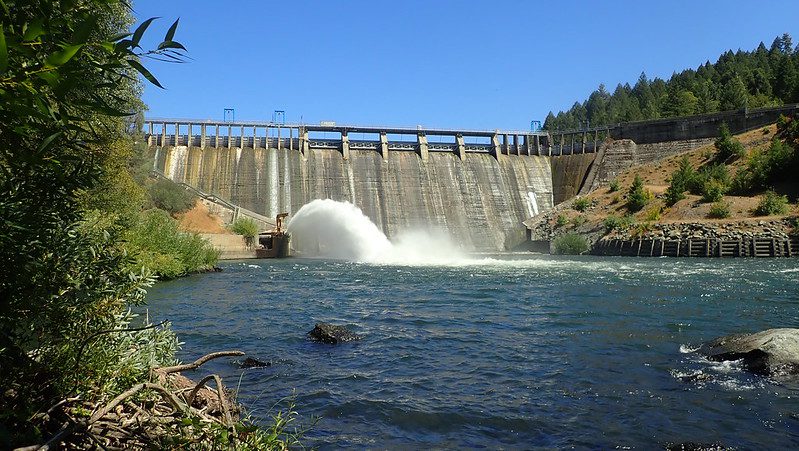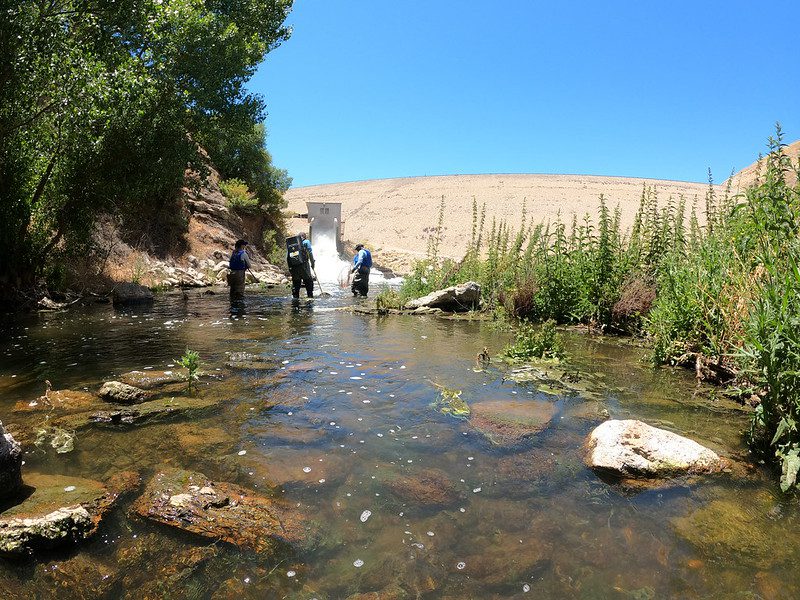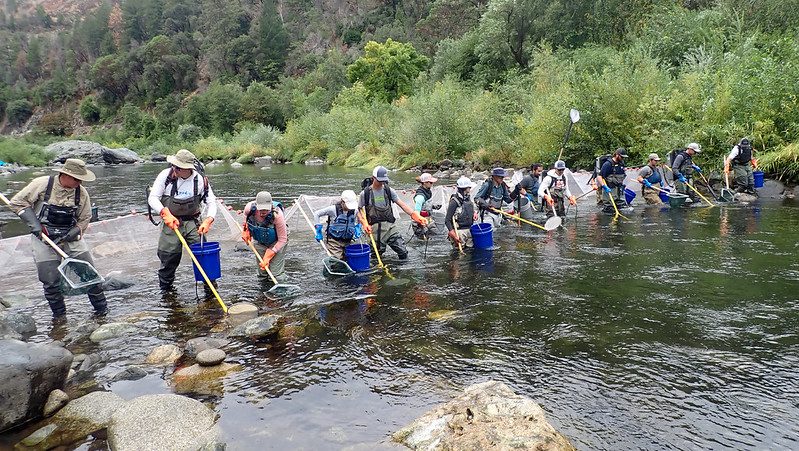Tuesday May 30, 2023

Hydropower is frequently heralded as a sustainable and climate-friendly source of electricity – after all, it uses water that falls as rain or snow at higher elevations to generate electricity as it flows downhill. Nearly 400 dams on California’s waterways contribute to the generation of about 7% of the electricity demand in the state – but hydropower generation isn’t without impact on the natural environment. The infrastructure required for power generation often presents obstacles to fish migration, and facility operations can change river flow and sediment dynamics in ways that may be detrimental to aquatic wildlife. To ensure hydropower facilities minimize their environmental impacts, they must adhere to specific requirements listed in operating licenses, such as allowable discharge schedules and temperature criteria.

The granting or renewal process for operating licenses, which are issued by the Federal Energy Regulatory Commission in the US, is often preceded by environmental studies that evaluate the impacts of the proposed operations on its surrounding natural resources. Based on these studies, flow criteria are defined, often incorporating seasonal changes and water availability. For example, minimum bypass flow requirements – the water that remains in the river channel and is not diverted for energy production – may be higher in water years that are classified as “Above Normal” or “Wet”, intended to ensure that aquatic wildlife (such as fish, frogs, plants, etc.) can persist and thrive. Hydroelectric facility operators are responsible for adhering to and fulfilling the terms of their license, or risk penalties, which may include having their license revoked. Compliance with physical license requirements (such as flow volume) is often relatively straightforward to monitor and document, but biological targets are much more difficult to prescribe and evaluate. License requirements are intended to protect aquatic resources, but the actual effects of the operating conditions over the lifespan of the license, typically 30 to 50 years, are difficult to foresee and need to be evaluated periodically. Oftentimes, fish are considered a reliable indicator of a stream’s ecological health. If fish populations are in good condition (indicated by healthy fish in suitable abundances, represented by multiple age classes), researchers can expect that other biological aspects of the habitat are also in good health. Based on the results of compliance monitoring, conditions may be adapted to meet the biological targets of the license.

FISHBIO implements periodic fish population monitoring at some hydroelectric projects to help the operators fulfill the requirements of their license terms. To get an accurate understanding of a fish community, FISHBIO uses electrofishing in a blocked-off stream section. To obtain accurate estimates of fish abundance, species composition, and biomass, a representative section of the stream is identified and “closed” for the duration of sampling. Isolating or closing a short part of a stream is achieved by placing and securing nets across the width of the river to prevent the entry and exit of fish from the reach. The sampling typically consists of a multiple-pass depletion survey, where, during each pass, a team of electrofishers move from the downstream net to the upstream net. During each of the three (or sometimes four) consecutive electrofishing passes, captured fish are removed and held in an enclosure until processing, leaving fewer and fewer fish in the sampling reach to be captured during subsequent passes. For each species, the number of fish captured during each consecutive pass is tallied and then used to estimate the overall abundance of a species in the sampled reach. These estimates, in combination with length and weight measurements of captured fish, inform estimates of density, biomass, and age composition for each species encountered.
Compliance monitoring often also includes benthic macroinvertebrates, amphibians, reptiles, birds, and plants. FISHBIO implements compliance monitoring activities on behalf of several clients – for fish and beyond. To learn more about FISHBIO services, check out the services page on the website.
This post was featured in our weekly e-newsletter, the Fish Report. You can subscribe to the Fish Report here.
